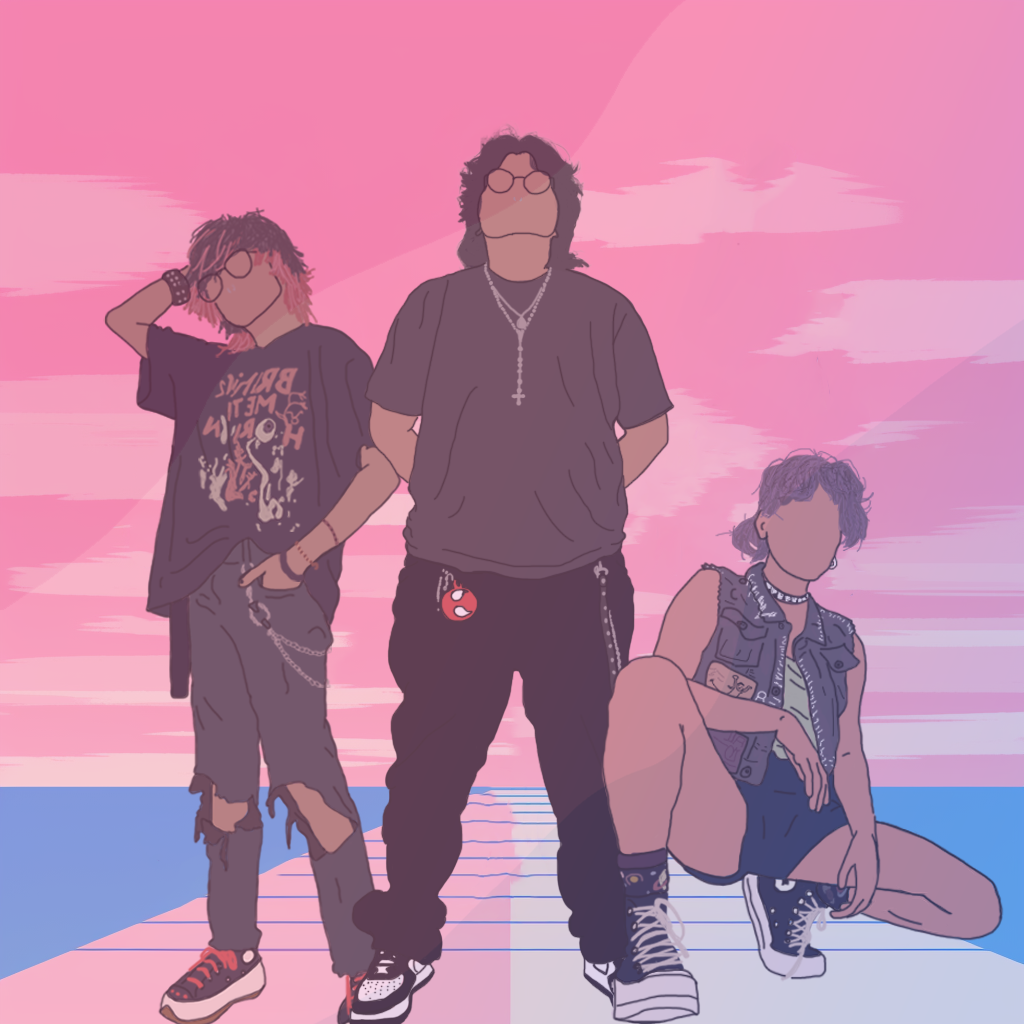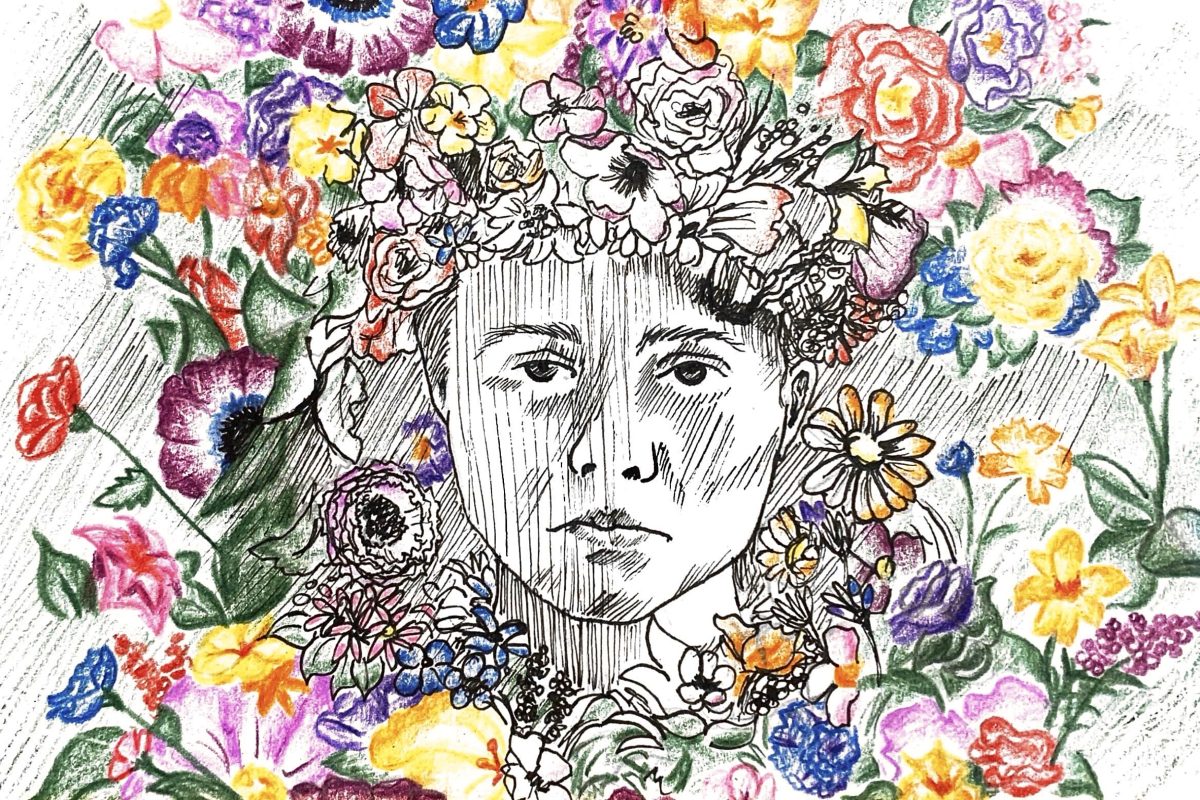Most of the factors going into our outfits are so small we might not even realize we’re considering them, such as the weather, where we’re going and what we generally feel comfortable in. These factors are neutral and practical, and we might not think they have much to do with our identity.
Other factors, however, can cause us to evaluate what we wear in deeper terms. External rhetoric — whether directed at us or someone else — can contribute to beliefs we’ve formed about certain clothes and the bodies that wear them. This includes everything from hearing “you’re really wearing that out?” to seeing labels like “healthy” or “unhealthy” describe certain bodies to seeing certain clothing dictate what gender someone is perceived as.
For Seb Mora, sophomore global Latinx studies major, both identifying outside of the gender binary and dressing outside of it go hand in hand. Growing up heavily influenced by ideas of binary gender in her household, she said her style used to be influenced by others’ expectations of her identity.
“For a long time of my life, I was told that because I was born male, masculinity must be instilled in my life, and I must present masculine, and I never really understood this idea,” Mora said.
Moving to college and being in a different environment gave Mora some distance from those expectations, which they said was integral to helping them feel comfortable branching out and exploring their personal style.
“Now that I’m experimenting with feminine clothing on top of masculine clothing and combining the two, it allows me to both recognize that yes, while I was born male, I still have these parts of my identity that aren’t either male or female and can live within this spectrum of feminine and masculine,” Mora said.
By taking clothes attached to binary gender roles and using them as tools to express herself, Mora says she feels seen when people recognize how her style incorporates the nuances of her gender identity.
“It’s the absolute best feeling ever when … people understand that my clothing has lots more to do with [not] just how I’m presenting myself, but it has to do with the way I identify,” Mora said.
Cutter Canada, senior English and communication double-major, has also experimented with how identity can manifest through style. As someone who identifies under the trans umbrella as a gender nonconforming person, Canada said that for a time, they felt compelled to express their gender identity by dressing androgynously.
However, gender identity is only one piece of each person’s complicated personal style puzzle, and Canada soon began dressing to express not only their identity but their personal creativity as well.
“I found my happy medium where I dress combining hypermasculine pieces with hyperfeminine pieces and kind of create this hodgepodge of both rather than going for just straight androgyny,” Canada said.
While clothing is a useful tool many people use to express their gender identity, it’s also not a requirement that someone’s gender identity is reflected in their outfit. Paradoxically, many trans, genderqueer and gender nonconforming people feel expected to “prove” their gender identity by either re-adhering to a different set of binary expectations or forsaking them entirely and pledging their allegiance to a uniform of androgyny.
Gender norms dictated how Layla Amador, first-year marketing major, was expected to present growing up — they were expected to keep their hair long, and wear dresses and bows.
“I think when I was younger, I didn’t feel femme on the inside — I still really don’t — I knew I wasn’t a girl. … I did feel pressured to be stereotypically femme, and that made me want to be everything but that,” Amador said.
They said their discomfort was more from the presumption that they were cisgender rather than from presenting feminine, and realizing their gender identity has made them more comfortable in feminine presentation.
“Once I got more comfortable in expressing myself and being openly genderqueer, I felt like that pressure was let go of, and I was more comfortable to be femme because I wanted to be femme,” Amador said.
Amador now reclaims their femininity in knowing that the way they dress is truly how they feel comfortable presenting as a nonbinary person, regardless of how they’ve been expected to present in the past. This has also given them space to explore feminine clothing they actually like to wear, such as clothes with traditional goth and nu metal aesthetics.
“Tripp pants, the ripped up shirts and the big chunky shoes … to me, that’s when I’m actually expressing my gender identity,” Amador said.
Gender is only one of the many constructs that form our beliefs about clothing and how we wear it that we deserve to be free from.
“The way we dress is definitely a reflection of who we are inside,” Mora said. “If someone is telling you that the clothing you wear is not representative of who you are, just don’t believe them because you’re allowed to wear whatever you want and feel confident in whatever you want.”








